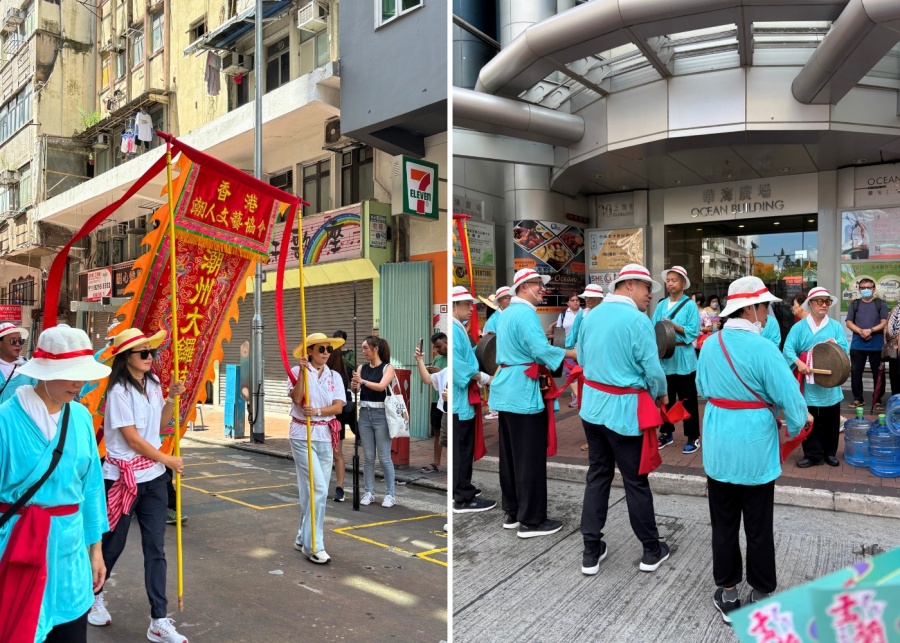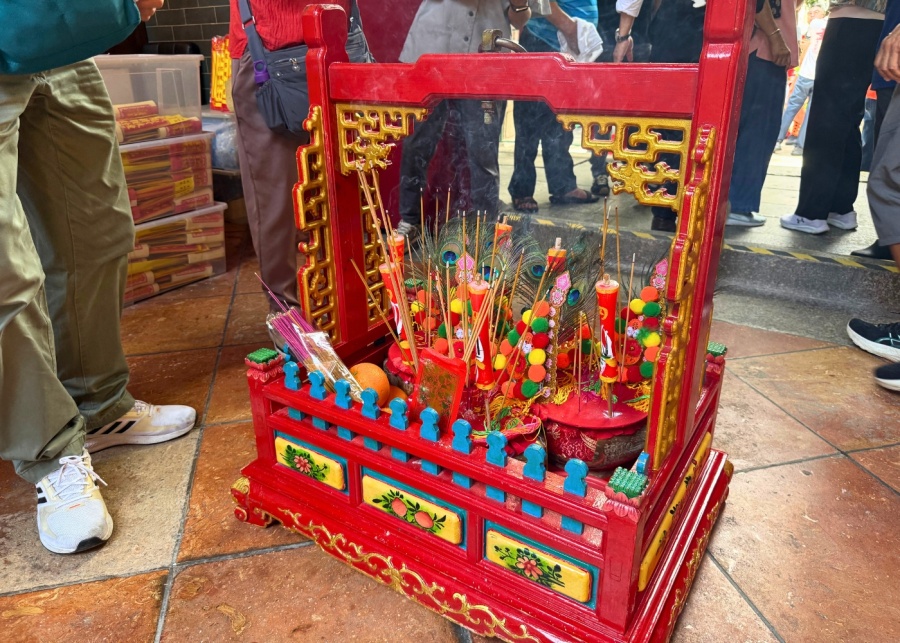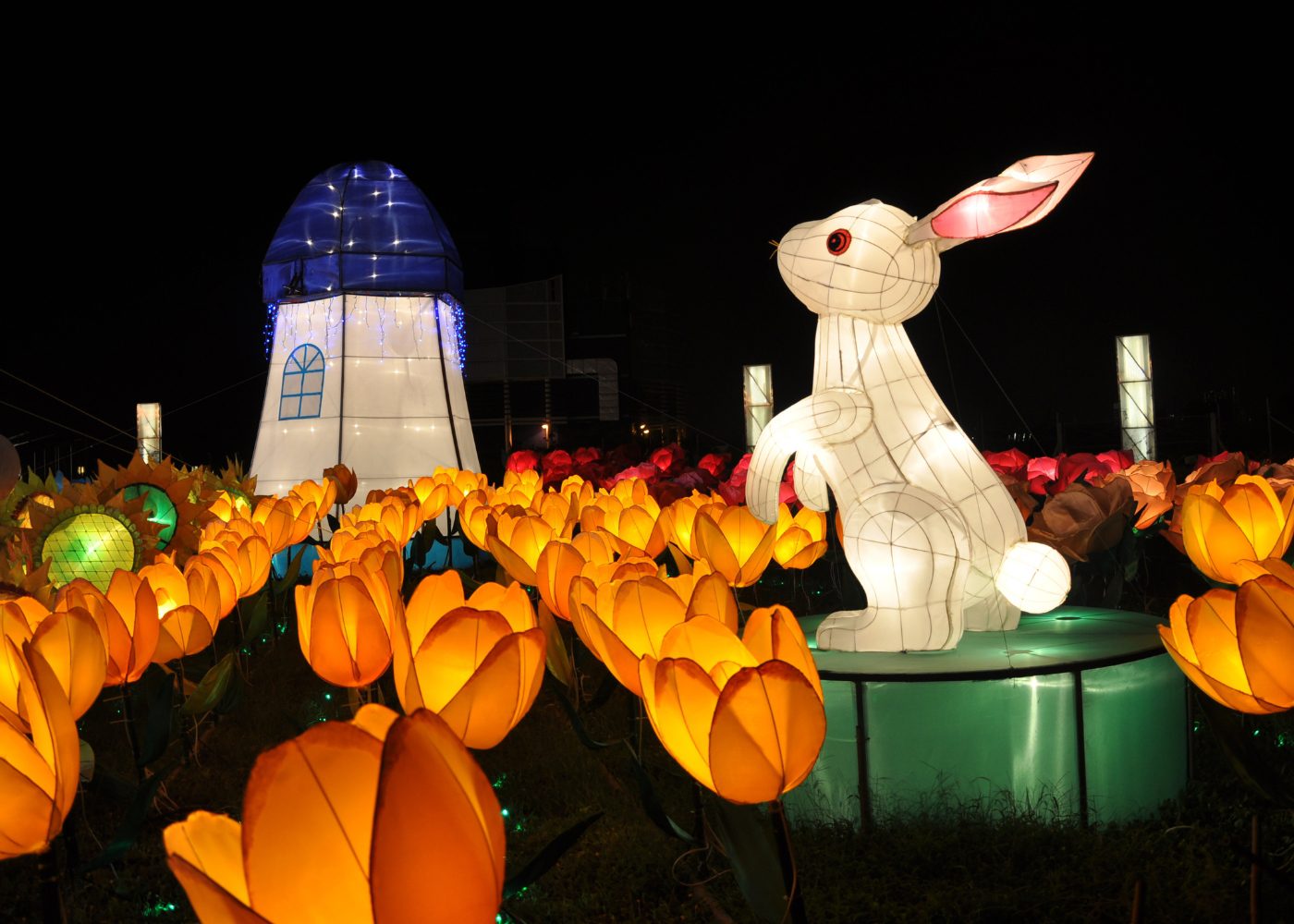
Beyond the spooks of “hungry ghosts,” the Hong Kong Chiu Chow community has been keeping a vibrant tradition alive with creative means.
Hungry Ghost Festival is one of the most celebrated traditional festivals in Hong Kong – and perhaps its most misunderstood. For some, this period entails meticulous adherence to rituals and taboos to avoid misfortunes. For the traditionally inclined, Yu Lan Festival is a time to honour and pay respects to ancestors with various offerings. As for the Chiu Chow community in Hong Kong, the festival is neither a time for superstition or simply local culture’s version of Halloween. To the Chiu Chow community, Yu Lan Festival is a time for centuries-old rituals, celebration, and gathering.
I follow Anven, Wu Yim Chung (胡炎松), Vice Chairman of the Federation of Hong Kong Chiu Chow Community Organisations and Chairman of the Yu Lan Festival Preservation Committee, into the vibrant ranks of Yau Ma Tei’s “Welcoming the Deity” Parade ahead of the district’s celebration around Tin Hau Temple. We debunk common myths surrounding the festival, delve into the core values of each element, and discuss how the committee has worked to keep this tradition alive and relevant.
Yu Lan Festival: A celebration of gods, ghosts, and ancestors
Myth-busting: Beyond hungry ghosts

Despite growing up in a traditionally-inclined household, Yu Lan Festival always came shrouded in spookiness. While elders in my family will burn offerings to ancestors and hungry ghosts during the seventh lunar month, they still cautioned us to observe various taboos and were especially against staying out too late. Yet the cultural significance of this festival goes beyond merely appeasing hungry ghosts. As Wu explains, “the festival has its origins in a spirit of charity and acceptance. For the Chiu Chow community, apart from honouring ancestors, we also pay respects to wandering ghosts who have no one to care for them.”
A festival rooted in history, tradition, and folklore

“The festival began with the story of Mulian (目連),” explains Wu. A commendable tale of filial piety, the legend retells how the practicing monk sought help from his teachers to save his mother’s wandering hungry spirit from an eternity in limbo. While Yu Lan Festival started as another ancestor-appeasing event, “it eventually evolved to include nameless ghosts and spirits in ritual sacrifices.”
This community-wide charity is characteristic of the Chiu Chow community worldwide. “There are two parts to a Yu Lan Festival: Praying for community peace and coherence on one hand, and gathering spiritual merit on the other. Spiritual merit is important for us,” says Wu. “It not only affects one’s fortune and life trajectory in this life but also the next. Extending our care to these wandering ghosts will help reduce one’s sin and increase blessing.”
Apart from worshipping ancestors and appeasing ghosts, two rituals stand out as key activities for the living to enjoy during Yu Lan Festival: “Scrambling for Loneliness” (搶孤) and “Yu Lan Tray Stacking” (盆供). In the first, participants use baskets attached to an eight-metre-tall pole to catch “loneliness” (represented by bean bags today) to eliminate disasters and misfortunes. The second has evolved from the group offerings made to wandering spirits to accumulate spiritual merit. While these rituals used to be reserved for the Chiu Chow community, the wider public can try their hand at these activities in open competitions at the Yu Lan Cultural Festival.
A heavenly invitation: Yau Ma Tei’s district parade

We had the chance to join the opening parade of Yau Ma Tei’s district celebration, where devotees and temple committee members gathered to “invite” deities to attend their celebrations at Jordan’s King George V Memorial Park. “As a community event, each Yu Lan Festival is organised and funded by respective temple committees and their devotees,” Wu elaborates as we stroll along with the parade through Temple Street.
“‘Welcoming the deity’ is an important part of Yu Lan Festival. Members cleanse the streets with ‘holy water’ on the way to the [Tin Hau] Temple, carving out sacred ground to welcome various deities back to the festival ground. Typically, all major deities of a district temple are ‘invited’ and ‘brought back.’”

Unlike the Tin Hau Festival and Cheung Chau Bun Festival where deity statues are carried from the temple to festival grounds using a miniature sedan chair, the Yau Ma Tei committee uses a laisee packet filled with urn ash and incense sticks to represent the invited deities. After returning to the festival ground, leading members carefully unload ceremonial incense burners onto the altar at the Deities’ Tent – a VIP seating area with prime views of the Cantonese opera stage.
Revamping tradition: Trendy elements at the Yu Lan Festival

As I feel the high energy and celebratory mood wash through me at the parade, Wu voices out various obstacles that the Yu Lan Festival Preservation Committee faces today. “We’ve been having issues with fundraising and see a decreasing number of young people participate at the festival. That’s why we hope to use the Yu Lan Cultural Festival to attract youngsters and the wider public by infusing contemporary elements, pop culture, and trendy technology into traditional rituals.”
Visitors can look forward to a series of carnival games, workshops, and other interactive elements at Causeway Bay’s Yu Lan Cultural Festival this year. Highlights include an immersive interactive theatre showing the original play, Come Home to Depart, which follows the trials and tribulations of a traditional craftsman haunted by his daughter’s ghost, and collectibles featuring key deities and spiritual animals of the festival.
Yu Lan Cultural Festival
How much: Free to enter
When: 10am – 8pm (6 – 7pm for immersive interactive theatre), 12 – 14 September 2025
Address: Moreton Terrace Temporary Playground, Moreton Terrace, Causeway Bay, Hong Kong
Hong Kong Yu Lan Festival Committee Celebrations by district
What cultural gem should I uncover next? DM @honeycombershk on Instagram or drop me an email at celia.lee@thehoneycombers.com.
Frequently Asked Questions
What are the main differences between how the Chiu Chow community and other groups in Hong Kong celebrate the Yu Lan Festival?
While many in Hong Kong view the Yu Lan Festival primarily as a period for ancestor worship and appeasing "hungry ghosts," for the Chiu Chow community, it is a much more elaborate celebration. It's a time for community gathering and the performance of centuries-old rituals that focus on both honouring ancestors and demonstrating a spirit of charity by caring for all wandering spirits.
Are there specific rituals that visitors can observe or participate in during the festival?
Yes, the article highlights two key public rituals that visitors can observe: the "Welcoming the Deity" Parade and the "Scrambling for Loneliness" event. The parade is a community procession to invite deities to the festival grounds. The "Scrambling for Loneliness" is a ritual where participants use poles to catch bean bags, symbolising the elimination of misfortune.
What modern or "trendy" elements have been added to the festival to attract younger people?
To ensure the tradition remains relevant, the Yu Lan Festival Preservation Committee has introduced contemporary elements. Visitors can look forward to a series of carnival games and interactive workshops. An immersive interactive theatre performance called "Come Home to Depart" and the creation of collectibles featuring the festival's deities and spiritual animals are also available for 2025.

